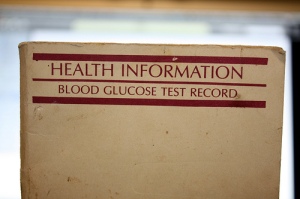Following is an index of blog entries between the start, March 4, 2010 and May 17, 2010, organized around major Recovery Act topics and General Government Themes.
RECOVERY ACT TOPICS
Broadband
The long view April 8, 2010
Build America Bonds
A billion here, a billion there March 12, 2010
Cash for Clunkers
Cash for Clunkers: Measuring Performance May 5, 2010
Cash for Clunkers: Digging Deeper April 15, 2010
Education
ARRA Meets the Frontier May 12, 2010
Leaving Cash on the Table… May 4, 2010
Heading Over the Funding Cliff? April 21, 2010
Judging the judges April 5, 2010
Update: Hawaii Education March 31, 2010
Hawaii: A very slow race to the top? March 30, 2010
Race to the Top chatter March 30, 2010
Race To the Top Finalists and a Clear Crystal Ball March 29, 2010
Race to the top . . . even without the cash March 19, 2010
Race to the Top: A New Beginning? March 4, 2010
Energy Efficiency
Long-term thinking in New Mexico April 23, 2010
A new report on measuring energy savings April 7, 2010
Health IT
Health IT: Puzzling Out the Meaning Behind “Meaningful Use” May 17, 2010
The Health IT Challenge April 21, 2010
Jobs
Pick a Number May 3, 2010
Where are Maryland’s Green Collar Jobs? May 3, 2010
A Stark Difference April 16, 2010
Youth shall be served. . . March 22, 2010
Research & Development
Using the Stimulus to Innovate March 29, 2010
Smart Grid
Smart Grids and the Stimulus May 13, 2010
Supplemental Nutrition Assistance (food stamps)
The cloud inside the silver lining April 19, 2010
A billion here, a billion there March 12, 2010
Transportation
“Shovel Ready or Not?” April 29, 2010
Is Faster Better? April 13, 2010
How much does it cost? March 18, 2010
Weatherization
Things actually could be finer…in Carolina May 11, 2010
Speeding up Weatherization: Michigan’s Solution April 14, 2010
Why weatherization dollars have been delayed April 7, 2010
Conflicting goals, weatherization and a little about soccer April 6, 2010
Reading list March 25, 2010
Wanna see a Governor get results? Keep reading March 24, 2010
Websites (states)
Trying to meet “a gold standard” April 5, 2010
Wisconsin: Better and better March 31, 2010
California’s take on Recovery.gov and the State’s New Stimulus Website March 23, 2010
“Before the phone starts ringing. . . .” March 23, 2010
INTERVIEW WITH: Beth Blauer, director of Maryland’s StateStat March 16, 2010
Ranking the websites — additional thoughts March 10, 2010
Ranking the stimulus websites March 9, 2010
Workforce Training
Measures for Workforce Training . . . A Minnesota Audit’s Critique April 22, 2010
GENERAL GOVERNMENT TOPICS
Administration
“It Takes Time to Coordinate” April 28, 2010
“It didn’t seem worth going through that headache. . . .” April 20, 2010
“Are you spending more time to report than to deal with programmatic responsibilities?” April 1, 2010
Economic Impact
A civilized followup April 8, 2010
A Civilized Debate April 2, 2010
Funding Cliff
Heading Over the Funding Cliff? April 21, 2010
Historical Perspective
“The sheer depth of the crisis. . . .” Q&A with Paul Posner May 6, 2010
Media Coverage
“You can’t do the math that way”April 12, 2010
Oversight
Accurate or not? April 27, 2010
From the auditor’s seatApril 9, 2010
Reading list March 25, 2010
Keeping up with the GAO March 8, 2010
Performance Measurement
Cash for Clunkers: Measuring Performance May 5, 2010
Measures for Workforce Training . . . A Minnesota Audit’s Critique April 22, 2010
Wanna see a Governor get results? Keep reading March 24, 2010
INTERVIEW WITH: Beth Blauer, director of Maryland’s StateStat March 16, 2010
Starting off on the right foot. . .March 15, 2010
How deep do you want to dive? March 8, 2010
Welcome. . . March 4, 2010
Public Opinion
Ed DeSeve: “They like the things money is used for. . . .” March 11, 2010
Technology
ARRA on Cloud Nine May 14, 2010
Transparency
Shedding (tiny little bits of) light on ARRA April 16, 2010
The transparency balancing act April 9, 2010
“Before the phone starts ringing. . . .” March 23, 2010
Cleaning up the data March 17, 2010
Nevada: Stimulus Reporting for Everyman March 5, 2010







